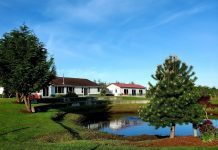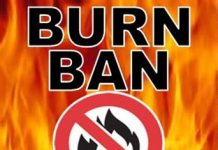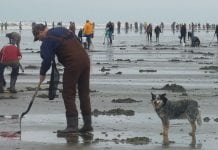Submitted by Washington Department of Fish and Wildlife
Effective immediately, recreational Dungeness crab fisheries on the Washington coast from areas north of Point Chehalis will reopen to crab fishing, including the popular waters of Grays Harbor.
Washington State Department of Fish and Wildlife (WDFW) fishery managers are able to reopen these specific coastal areas after testing showed domoic acid levels in crab met standards for safe consumption.
“We are hoping that the drop in marine toxin levels is the start of a trend,” said Dan Ayres, WDFW coastal shellfish manager. “WDFW, working closely with the Department of Health, will continue marine toxin sampling in all marine areas as weather and ocean conditions allow. Our decision on whether or not to open additional crabbing or razor clam areas will be based on these sampling results.”
Recreational crab fishing has been closed statewide for months in many areas due to marine toxins. Domoic acid, a natural toxin produced by certain types of marine algae, can be harmful and even fatal if consumed in sufficient quantities. Cooking or freezing does not destroy domoic acid in shellfish.
Crabbing in marine areas 1 (Ilwaco from the Columbia River to Leadbetter Point) and 2-1 (South of Point Chehalis to Leadbetter Point, including Willapa Bay) remains closed, as do razor clam digs throughout Washington. WDFW staff are continuing to sample shellfish on a regular basis and will announce additional Dungeness crab and razor clam openings when domoic acid levels drop and the Washington Department of Health determines clams and crabs are safe to eat.
Harvesters can find up-to-date information on seasons and shellfish safety information on the Washington Shellfish Safety Map webpage. More information about domoic acid can be found on WDFW’s domoic acid webpage.
To be safe, DOH recommends that fishers clean crab thoroughly and discard the guts (butter/viscera).
November and December closures represent the first time since 2015 that crab fisheries have been closed in Washington due to domoic acid. The toxin was first detected on the Washington coast in 1991.
The Washington Department of Fish and Wildlife is the primary state agency tasked with preserving, protecting and perpetuating fish and wildlife and ecosystems, while providing sustainable fishing and hunting opportunities.
Individuals who need to receive this information in an alternative format, language, or who need reasonable accommodations to participate in WDFW-sponsored public meetings or other activities may contact the Title VI/ADA Compliance Coordinator by phone at 360.902.2349, TTY (711), or email (Title6@dfw.wa.gov). For more information, see the Washington Department of Fish and Wildlife website.










































